Building an industrial internet platform, expanding “smart +”, and empowering the transformation and upgrading of the manufacturing industry.
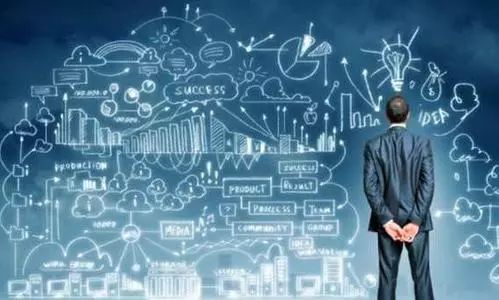
The 5G ecosystem features low latency and high speed, making it more widely applicable in the Internet of Things, especially in the industrial internet, where edge computing plays an important supporting role.
Cloud computing is no longer sufficient to process and analyze the data generated or about to be generated by IoT devices, connected vehicles, and other digital platforms in real time; this is where edge computing comes into play. This technology has the potential to be applied across various industries and to play a significant role.
Currently, big data processing is transitioning from a cloud-centric centralized processing era to an edge computing era centered on the Internet of Everything.
What is Edge Computing
Edge computing is a new computing model that executes computations at the edge of the network. In edge computing, the downlink data at the edge represents cloud services, while the uplink data represents Internet of Everything services. The edge of edge computing refers to any computing and network resources between the data source and the cloud computing center.
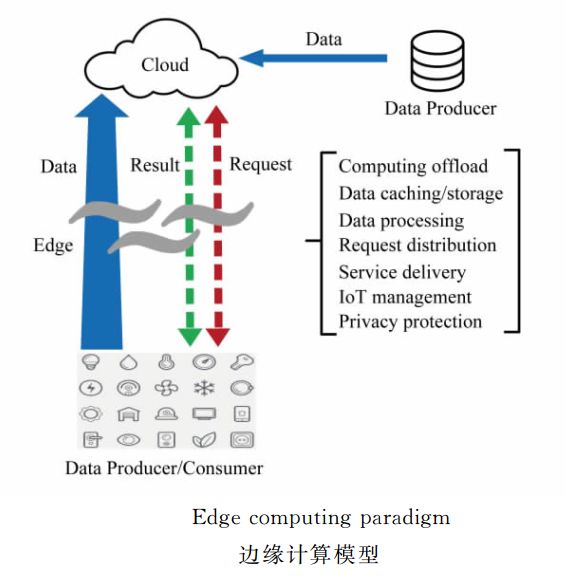
The cloud computing center not only collects data from databases but also from edge devices such as sensors and smartphones. These devices serve as both data producers and consumers. Therefore, the request transmission between terminal devices and the cloud center is bidirectional.
Network edge devices not only request content and services from the cloud center but can also perform some computing tasks, including data storage, processing, caching, device management, and privacy protection. Therefore, it is necessary to better design the hardware platforms of edge devices and their key software technologies to meet the requirements for reliability and data security in the edge computing model.
Why Edge Computing is Needed
1. Insufficiency of Cloud Computing Services
Cloud computing mostly adopts a centralized management approach, which creates high economic benefits for cloud services. However, in the context of the Internet of Everything, application services require low latency, high reliability, and data security, which traditional cloud computing cannot meet, primarily due to three aspects:
1) Real-time requirements.
In the Internet of Everything environment, edge devices generate a large amount of real-time data, and the performance of cloud computing is gradually reaching its bottleneck. According to IDC’s predictions, by 2020, the total amount of global data will exceed 40ZB. As the amount of data from edge devices increases, network bandwidth is gradually becoming another bottleneck for cloud computing; merely increasing network bandwidth cannot meet the latency requirements of emerging IoT applications.
For example, the Boeing 787 generates more than 5GB of data per second, but the bandwidth between the aircraft and satellites is insufficient to support real-time transmission. Sensors and cameras mounted on autonomous vehicles capture road condition information in real time, generating about 1GB of data per second. According to IHS predictions, by 2035, there will be 54 million autonomous vehicles globally, and achieving shorter latency will be a major research direction in the future. Therefore, executing some or all computations on edge devices close to the data source is an emerging computing model that meets the needs of IoT applications.
2) Privacy protection.
When users utilize e-commerce websites, search engines, or social networks, their privacy data is uploaded to the cloud center. For instance, a medical sports application based on motion tracking has been developed, which contains user privacy data; for example, starting point information can reveal a user’s home address.
With the popularity of smart homes, many households install network cameras indoors. If video data is directly uploaded to the cloud data center, the transmission of video data not only occupies bandwidth resources but also increases the risk of user privacy data leakage.
To address the data security issues of the existing cloud computing model, the edge computing model provides a better privacy protection mechanism for such sensitive data. On one hand, the user’s source data is processed directly at the edge node near the data source before being uploaded to the cloud data center, achieving protection and isolation of some sensitive data; on the other hand, functional interfaces are established between edge nodes and cloud data, meaning that edge nodes only receive requests from the cloud computing center and feedback the processed results to the cloud computing center. This method can significantly reduce the risk of privacy leakage.
3) Energy consumption.
Regarding the energy consumption of cloud data centers, many researchers have conducted in-depth investigations, resulting in predictions that by 2020, the total energy consumption of all data centers in the United States will increase by 4%, reaching approximately 73 billion kilowatt-hours.
In China, the Environment 360 report indicates that the electricity consumed by China’s data centers has already exceeded the total electricity consumption of Hungary and Greece combined.
As more user applications run on cloud computing centers, future large-scale data centers will struggle to meet energy consumption demands.
Current research on optimizing energy consumption in cloud computing centers primarily focuses on improving energy efficiency and dynamic resource management strategies to mitigate the speed of energy consumption growth and maximize energy savings.
However, improving energy efficiency levels still cannot solve the enormous energy consumption problems of data centers, and this issue will become more prominent in the Internet of Everything environment. To address this energy consumption challenge, the edge computing model proposes to decompose some computing tasks originally running on cloud data centers and migrate the decomposed computing tasks to edge nodes for processing, thereby reducing the computational load of cloud computing data centers and achieving energy consumption reduction.
Based on the existing cloud computing model centered on centralized big data processing, there is an urgent need to focus on edge computing models for massive edge data processing technologies. The two complement each other and are applied to big data processing in cloud centers and edge ends, addressing the insufficiencies of cloud computing services in the era of the Internet of Everything.
2. The Rise of the Internet of Everything
Sensors, smartphones, wearable devices, and smart appliances will become part of the Internet of Everything, generating massive amounts of data, while the existing cloud computing bandwidth and computing resources cannot efficiently process this data.
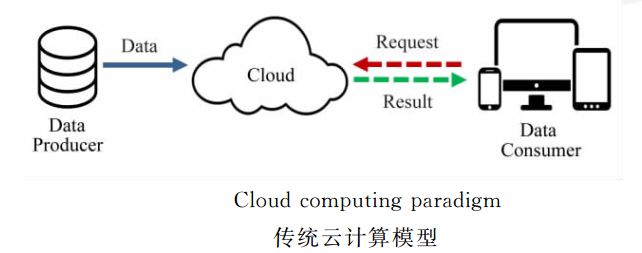
In the traditional cloud computing model, source data is sent to the cloud by producers, while end users, smartphones, personal computers, and other data consumers send usage requests to the cloud center. Cloud computing utilizes a large amount of computing resources to process data, but in the Internet of Everything environment, the traditional cloud computing model cannot effectively meet the needs of IoT applications; it sends massive data from edge devices to the cloud, causing network bandwidth load and waste of computing resources. The privacy protection issues of the traditional cloud computing model will become obstacles in the cloud computing model of IoT architecture. Most edge device nodes in the IoT architecture have limited energy, and the energy consumption of wireless transmission modules is relatively high.
3. From Data Consumers to Producers
In the cloud computing model, edge terminal devices usually act as data consumers (e.g., watching online videos on smartphones). Nowadays, smartphones can also produce data, and the shift from data consumers to producers requires edge devices to have stronger computing capabilities, such as when people share photos and videos through social software. The daily uploads to WeChat Moments and Tencent QQ Space reach up to 1 billion images; Tencent Video’s daily views reach 2 billion. These images and videos are large in volume, and the process of uploading to cloud computing centers will occupy a large amount of bandwidth resources. Therefore, preprocessing can be performed on edge devices before source data is uploaded to the cloud center to reduce the amount of data transmitted and lower the transmission bandwidth load. Additionally, if personal health data and other privacy data are processed on edge devices, user privacy will be better protected.
Advantages of Edge Computing
The edge computing model migrates some or all computing tasks of the original cloud computing center to be executed near the data source. Based on the three V characteristics of big data, namely volume, velocity, and variety, the advantages of the edge computing model can be analyzed by comparing the centralized big data processing represented by the cloud computing model and the edge big data processing represented by the edge computing model.
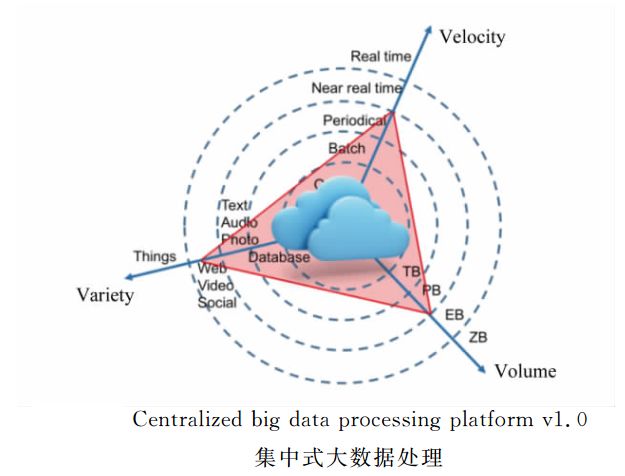
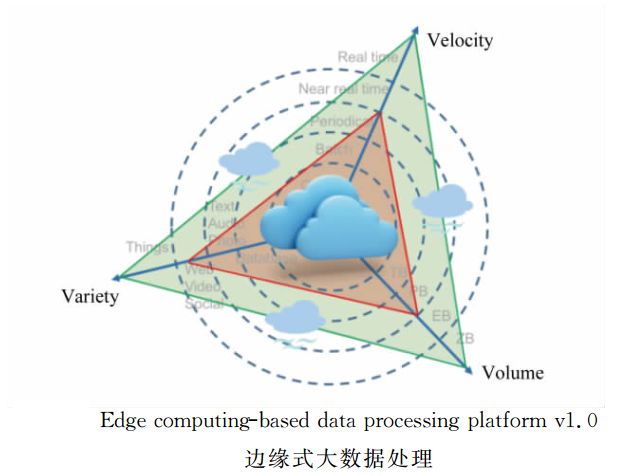
In the era of centralized big data processing, the types of data are primarily text, audio and video, images, and structured databases, with data volumes maintained at the PB level, where the data processing under the cloud computing model does not require high real-time demands.
In the era of edge big data processing against the backdrop of the Internet of Everything, the types of data become more complex and diverse, with a sharp increase in perceptual data from IoT devices. Users’ terminals that were originally data consumers have transformed into data-producing terminals, and the real-time processing requirements of data are higher in the edge big data processing era. Additionally, the data volume has exceeded the ZB level. In response to this, due to the increasing data volume and real-time requirements, some of the computing tasks from the original cloud center need to be partially migrated to network edge devices (as shown in the edge cloud of the diagram) to improve data transmission performance, ensure processing real-time, and reduce the computational load of cloud computing centers.
The data characteristics of the edge big data processing era have given rise to the edge computing model. However, the edge computing model and the cloud computing model are not mutually exclusive; rather, they complement each other. The era of edge big data processing is characterized by the mutual integration of the edge computing model and the cloud computing model, and the organic combination of the two will provide a more perfect hardware and software support platform for information processing in the era of the Internet of Everything.
Applications of Edge Computing in Various Industries
As the prices of sensors and computing costs continue to decline, more “things” will be connected to the internet.
With the increasing availability of connected devices, edge computing will find more and more applications across various industries, especially in areas where cloud computing is inefficient.
We are already beginning to see the impact of this technology in various industry sectors.
“When we push the power of the cloud down to devices (i.e., the edge), we can bring real-time response, analysis, and action capabilities, especially in areas with limited or no network conditions… It is still in its early development stage, but we are beginning to see these new capabilities applied to address some major global challenges.” — Microsoft CTO Kevin Scott
From autonomous vehicles to agriculture, the following industries will benefit from the potential of edge computing.
Transportation
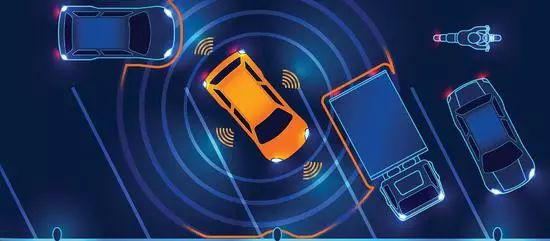
One of the most apparent potential applications of edge computing technology is in transportation—more specifically, in autonomous vehicles.
Autonomous vehicles are equipped with a variety of sensors, from cameras to radar to laser systems, to help the vehicles operate.
As mentioned earlier, these autonomous vehicles can leverage edge computing to process data closer to the vehicle, thereby minimizing system response time during driving. Although autonomous vehicles are not yet mainstream, companies are preparing for the future.
Earlier this year, the Automotive Edge Computing Consortium (AECC) announced the launch of a project focused on connected vehicle solutions.
“Connected vehicles are rapidly expanding from luxury models and high-end brands to mass-market mid-range models. The automotive industry is approaching a tipping point, where the amount of data generated by vehicles will exceed the current cloud, computing, and communication infrastructure resources.” — AECC Chairman Kenichi Murata
Members of the consortium include DENSO Corporation, Toyota Motor, AT&T, Ericsson, Intel, and others.
However, it is not only autonomous vehicles that generate large amounts of data and require real-time processing. Aircraft, trains, and other modes of transportation do as well—regardless of whether they are human-driven.
For example, Bombardier’s C Series aircraft is equipped with numerous sensors to quickly detect engine performance issues. During a 12-hour flight, the aircraft generates up to 844 TB of data. Edge computing supports real-time processing of this data, allowing the company to proactively address engine issues.
Healthcare
Nowadays, people are increasingly fond of wearing fitness trackers, glucose monitors, smartwatches, and other wearable devices that monitor health conditions.
However, to truly benefit from the vast amounts of data collected, real-time analysis may be essential—many wearable devices connect directly to the cloud, while others support offline operation.
Some wearable health monitors can analyze pulse data or sleep patterns locally without connecting to the cloud. Doctors can then assess patients on the spot and provide instant feedback on their health status.
But in the healthcare sector, the potential of edge computing extends far beyond wearable devices.
Consider the tremendous benefits that rapid data processing can bring to remote patient monitoring, inpatient care, and medical management in hospitals and clinics.
Doctors and clinicians will be able to provide faster and better care, while the health data generated by patients will have an additional layer of security. Hospital beds typically have over 20 connected devices, generating massive amounts of data. This data processing will occur closer to the edge rather than sending confidential data to the cloud, thereby avoiding the risk of unauthorized access.
As mentioned earlier, localized data processing means that large-scale cloud or network failures will not affect business operations. Even if cloud operations are interrupted, these hospitals’ sensors can still operate independently.
Manufacturing

Smart manufacturing is expected to gain insights from the large number of sensors deployed in modern factories.
By reducing latency, edge computing may enable manufacturing processes to respond and change more quickly, applying insights gained from data analysis in real time. This may include shutting down machines before they overheat.
A factory can use two robots to perform the same task, both equipped with sensors and connected to an edge device. The edge device can run a machine learning model to predict whether one of the robots is likely to fail.
If the edge device determines that a robot is likely to fail, it will trigger actions to prevent or slow down the robot’s operation. This will enable the factory to assess potential failures in real time.
If robots can process data themselves, they may also become more self-sufficient and responsive.
Edge computing should support faster insights from big data and enable more machine learning techniques to be applied to business operations.
The ultimate goal is to extract the immense value of real-time generated data, prevent safety hazards, and reduce interruptions in machine operations on the factory floor.
Agriculture and Smart Farms

Edge computing is particularly well-suited for agriculture because farms are often located in remote areas and harsh environments, which may pose bandwidth and connectivity issues.
Now, smart farms looking to improve connectivity need to invest in expensive fiber optics, microwave connections, or a satellite that operates all-weather; edge computing is a suitable and cost-effective alternative.
Smart farms can use edge computing to monitor temperature and equipment performance, as well as automatically slow down or shut down various devices (such as overheating pumps).
Energy and Grid Control
Edge computing may be especially effective across the energy sector, particularly in the safety monitoring of oil and gas facilities.
For example, pressure and humidity sensors should be closely monitored and cannot afford connectivity errors, especially considering that most of these sensors are located in remote areas. If abnormalities occur—such as overheating pipelines—and are not promptly addressed, catastrophic explosions could happen.
Another benefit of edge computing is the ability to detect equipment failures in real time. Through grid control, sensors can monitor energy generated by everything from electric vehicles to wind farms, helping make corresponding decisions to reduce costs and improve energy production efficiency.
Applications in Other Industries
Other industries that can leverage edge computing technology include finance and retail. Both industries use large customer and backend datasets to provide a variety of information, from stock selection to in-store clothing placement, benefitting from reduced reliance on cloud computing.
Retail can use edge computing applications to enhance customer experience. Nowadays, many retailers are working to improve in-store experiences, making it absolutely meaningful for them to optimize how they collect and analyze data—especially considering that many retailers are already trying to use connected smart displays.
Additionally, much of the sales data generated by in-store tablets is transmitted to the cloud or data centers. With edge computing, data can be analyzed locally, thereby reducing the risk of sensitive data leakage.
Although current edge computing applications are still in the exploratory phase, they have already been applied in many fields, including autonomous driving, intelligent security front-end, industrial-grade low-latency applications, VR/AR real-time combat games, remote healthcare, and more. The diversified applications of the 5G era have spurred the rapid development of edge computing, and traditional data centers will extend to the edge side, accelerating the integration of ICT. The edge computing market scale is expected to reach trillions, becoming an emerging market that will rival cloud computing.
Source: Sensor Technology
END
Hot Articles (Scroll Up to Read)
Article Recommendation | Li Lei: Research on Data-Driven Fault Prediction Methods
Article Recommendation | Yan Junjie: Automatic Precision Assembly Technology of Satellite Antenna Modules Based on Machine Vision
Article Recommendation | Yao Yanling: Research on the Diagnosis Model of Surge in Aviation Engines Based on CNN-Seq2Seq
Article Recommendation | Guan Li: Overview of Electric Static Liquid Actuation Technology in Aircraft Flight Control Actuation Systems
Article Recommendation | He Yunze: Analysis of Acoustic Emission Signals of Power Devices in Inverter Circuits
Article Recommendation | Xie Li: Defect Detection of Circuit Board Components Based on Improved YOLOv4 Network
Article Recommendation | Wang Yizhou: Short Video Fingerprint Extraction Based on R(2+1)D Three-Stream Twin Network
Article Recommendation | Han Han: Overview of No-Reference Image Quality Assessment Based on Deep Learning
Article Recommendation | Wang Jiulong: Research on the Fatigue Test Technology of Helicopter Tail Rotor Blades
Article Recommendation | Sun Weihong: Research on Portable ECG Monitoring System Based on Flexible Electrodes
Article Recommendation | Zhang Meiju: Research Status and Development Trends of Ceramic Substrate Thin Film Thermocouples
Article Recommendation | Ouyang Lin: Fatigue Driving Detection Algorithm Based on Driver’s Facial Temporal Data
Article Recommendation | Zhang Wenli: Multi-Target Tracking Algorithm Based on Improved Transformer with Anchor-free Network
Article Recommendation | Liu Guanjun: Research Progress on Silicon-based and Graphene-based Resonant Pressure Sensors
Article Recommendation | Jiang Chao: Overview of Image-based UAV Battlefield Situation Awareness Technology
Article Recommendation | Zhang Feiyang: Overview of Alertness Detection Research Based on Physiological Signals
Article Recommendation | Qiu Fang: Research on Autonomous Management Software Architecture for Spacecraft Control Systems for Deep Space Exploration
Article Recommendation | Wang Yanshan: Research Progress on Flexible Pressure/Strain Sensors Based on Graphene
Article Recommendation | Wang Hong: Research on the Testing Technology System Architecture for Civil Aircraft
Article Recommendation | Liu Yawei: Overview of Digital Twin and Application Research for Aircraft Structural Health Management
Article Recommendation | Sun Zhiyan: Overview of the Development of Aviation Engine Control Systems
Forum Discussions | Academician Gao Jinjie: Intelligent Monitoring of Vibration Faults in Aviation Engines
Forum Discussions | Wang Haifeng: Understanding and Discussion on the Intelligent Development of Aviation Equipment Support
Forum Discussions | Wang Huamao: Overview of Comprehensive Testing Technology and Development Trends for Spacecraft
Forum Discussions | Li Kaisheng: Discussion on Measurement and Control Technology Needs for Large Aircraft Power Systems
2021 Excellent Papers in Computer and Automation Technology Field Collection
2021 Excellent Papers in Aerospace Field Collection2020 Excellent Papers in Aerospace Field Collection
2020 Excellent Papers in Computer and Automation Technology Field Collection

